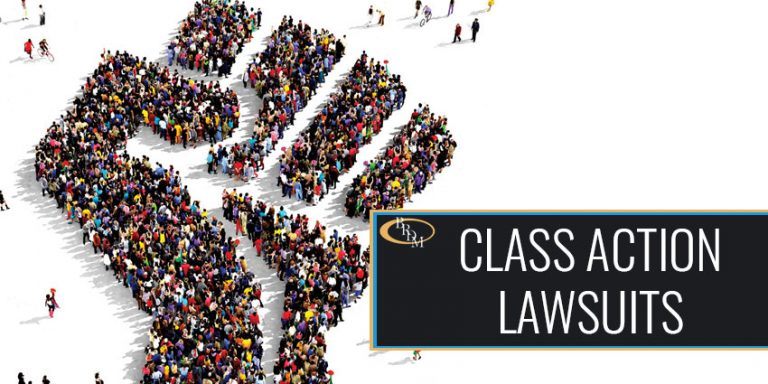Exploring the Assertio Class Action Lawsuit: Your Comprehensive Guide
Exploring the Assertio Class Action Lawsuit: Your Comprehensive Guide
Blog Article
Demystifying Class Activity Claims: A Closer Check Out Legal Process
Course activity lawsuits can be complex and daunting, usually shrouded in a veil of secret for those strange with the legal process included. From comprehending the criteria for course activity eligibility to the duty of course agents, and from the process of class qualification to the resolution of these legal actions, we will unwind the intricacies and dropped light on the internal functions of this legal system.
Understanding Course Activity Lawsuits
Comprehending Course Activity Lawsuits needs an extensive examination of the lawful process involved in collective lawsuits. Class action lawsuits are a sort of lawsuit where a team of individuals with similar claims or complaints collaborate to launch a claim versus an usual defendant. This form of litigation enables individuals with minimal resources to collectively look for justice, as it incorporates the strength of numerous private cases right into a solitary lawful action.
The procedure begins with the identification of a lead complainant or class agent who files the initial grievance in behalf of the whole course. The court after that determines whether the instance satisfies the requirements for course accreditation, that include commonality, numerosity, typicality, and adequacy of representation. If accredited, the court alerts possible class members, providing an opportunity to opt-out if they desire to pursue their insurance claims separately.
When the course is licensed, the lawsuits continues through different stages, including discovery, motion practice, and, if required, trial. The outcome of the legal action can result in a negotiation or a judgment, which is binding on all class members unless they select to opt-out. Course action suits can include a wide variety of legal problems, such as consumer protection, safety and securities fraudulence, work discrimination, and ecological damage.
Understanding the nuances of class action legal actions is critical for both accuseds and complainants associated with cumulative litigation. It needs a comprehensive understanding of the lawful needs for certification, the rights and responsibilities of class members, and the potential advantages and threats associated with pursuing or protecting versus class activity cases.
Identifying Class Activity Eligibility
To establish whether a lawful action certifies as a course action suit, certain standards need to be satisfied. These standards are developed to guarantee that the case can appropriately stand for the interests of a huge team of individuals that have suffered similar harm or have been influenced by the very same problem. The vital variable in determining course activity qualification is the presence of an usual inquiry or concern that impacts all possible class members.
To start with, a course activity legal action calls for numerosity, which indicates there have to be a substantial number of possible course members entailed. This ensures that a course activity is an efficient method to solve the insurance claims of a huge team of people, instead than having everyone file a specific claim.
Secondly, there should be commonness amongst the cases of the prospective course participants. This means that there need to be a typical concern of law or truth that is main to the situation. A class action might not be ideal. if each possible course participant's case is unrelated and special to the others.

The Function of Course Rep
Class reps play a critical role in course activity lawsuits by representing the rate of interests of the entire class. These individuals are selected from within the course to serve as the public face of the suit and are responsible for making decisions in behalf of all course members. The function of course agents involves different obligations and responsibilities throughout the lawful procedures.
One of the main obligations of course agents is to supply info and aid to their fellow course members. They serve as a factor of get in touch with and interaction in between the class participants and the lawyers representing them. This consists of keeping the course members educated around crucial updates, addressing their questions, and addressing any concerns they might have.
Class representatives also have the responsibility to proactively join the lawsuits process (Future FinTech class action lawsuit). This entails working very closely with the attorneys to create lawful approaches, gathering evidence, and offering statement if necessary. They need to be proactively associated with all aspects of the instance to ensure that the most effective interests of the entire course are represented
In addition, course reps are responsible for authorizing settlements or other resolutions reached in the legal action. They must carefully evaluate the terms of the settlement and decide that is in the finest rate of interest of the entire class. This decision-making procedure needs cautious factor to consider and appointment with the class members.
The Process of Course Accreditation
The procedure of accrediting a course in a course action suit includes an extensive examination of particular standards to establish if the case satisfies the required requirements for course qualification. Course certification is an essential action in the litigation procedure as it establishes whether a claim can proceed as a course activity, permitting a large team of people with similar insurance claims to be stood for collectively by one or a couple of people.
To obtain class certification, the plaintiff needs to demonstrate that the recommended class satisfies particular requirements. Typicality requires that the cases or defenses of the class reps are common of those of the course. Competence of depiction makes sure that the class representatives will rather and properly shield the passions of the course.
If the suggested course meets the necessary demands,The court will inspect these requirements and the plaintiff's proof to identify. The court may additionally consider other variables, such as whether a class action is the remarkable approach to settle the disagreement and whether the class is completely natural.

As soon as the court gives class qualification, the lawsuit can continue as a course action, enabling the complainants to collectively look for alleviation and potentially get a judgment or negotiation that profits the whole class.
Solving Course Activity Lawsuits
When course certification has been given, the following action in fixing a course action claim is to browse the process of litigation or negotiation arrangements. Lawsuits refers to the lawful procedures in court, where the complainant's attorney offers proof and arguments to sustain their cases, and the accused's lawyer counters with their very own proof and disagreements. This procedure can involve different phases, such as pretrial motions, exploration, and test. During pretrial movements, both events may submit motions to reject the situation or limit the issues in contention. Discovery permits each side to gather evidence and details from the various other celebration through methods such as file depositions, demands, and interrogatories. Ultimately, if the instance continues to trial, both events offer their case before a judge or court, who will certainly then determine the outcome.
On the other hand, settlement arrangements include discussions in between the parties to reach a mutually appropriate resolution without going to trial. BioVie class action lawsuit. Negotiation uses may be made at any kind of phase of the lawsuits process, and if both events concur, a settlement contract is gotten to. This contract usually lays out the conditions of the settlement, including any kind of monetary payment, injunctive relief, or various other remedies. Once the negotiation is wrapped up, it is presented to the court for approval.
Final Thought
Finally, class action lawsuits play an important duty in providing justice and payment to big groups of people who have been damaged by the very same entity. By selecting and accrediting a course course representatives, the legal process ends up being a lot more easily accessible and efficient for the plaintiffs. Dealing with these legal actions can be a complex and lengthy process, but it is vital in holding firms liable for their actions and making sure fair end results for all affected celebrations.
From comprehending the standards for class action qualification to the role of course reps, and from the process of course certification to the resolution of these claims, we will certainly untangle the details and shed light on the internal functions of this lawful system. The key variable in recognizing course activity eligibility is the presence of an usual question or concern that affects all potential course participants.
If each BioVie class action lawsuit possible class participant's claim is unassociated and distinct to the others, a class activity might not be proper.
Class agents play a crucial role in course activity suits by representing the interests of the whole course.Once class accreditation has been granted, the next action in settling a course action claim is to navigate the procedure of lawsuits or negotiation arrangements.
Report this page